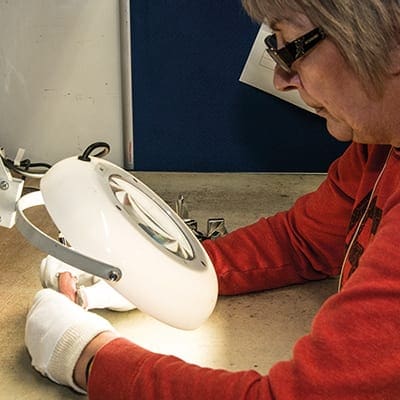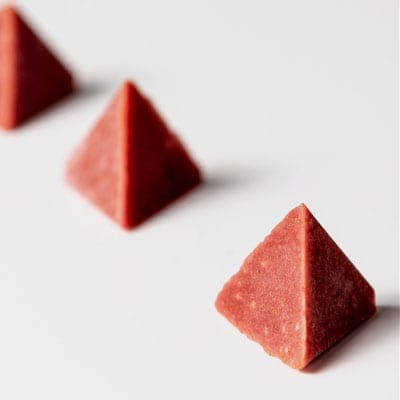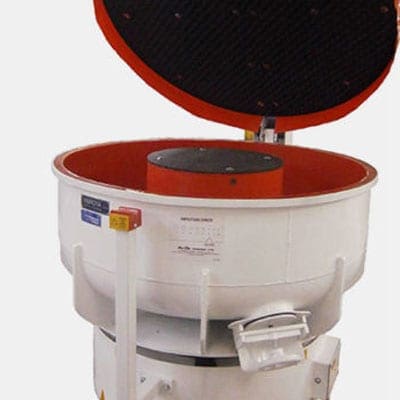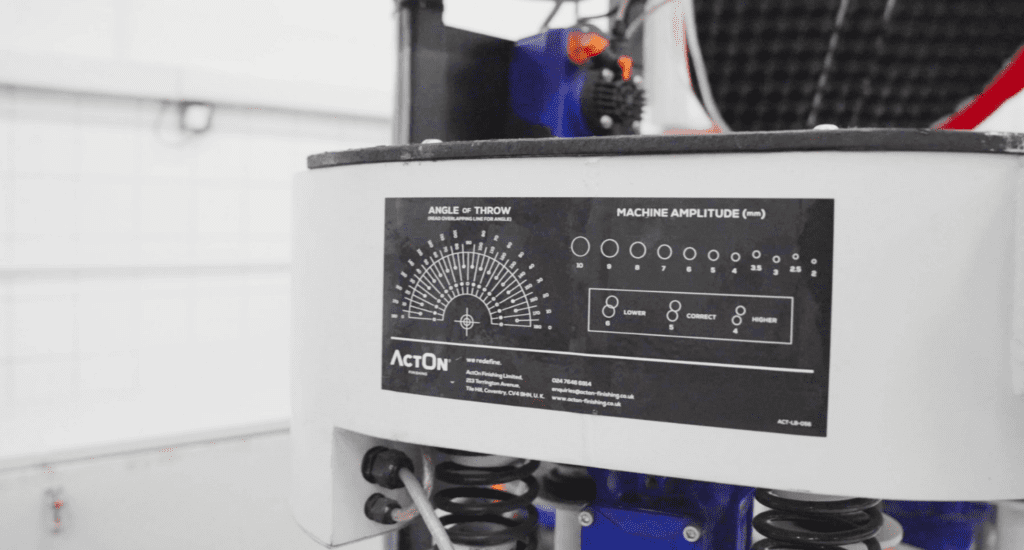
Looking to get the best results out of your vibratory finishing process? At ActOn Finishing, we’ve got you covered. Let’s discuss what the vibratory finishing machine amplitude is, why you should check it and how to carry out the correct checks to ensure your vibratory finishing machine is the best it can be.


What is amplitude?
Put simply, The amplitude of a vibratory finishing machine controls the final finish of the component. The amplitude can vary from 1mm to 8mm, with 4mm to 5mm being the normal operating range.
Why is amplitude important to the vibratory finishing process?
Knowing the amplitude during the vibratory finishing process helps you achieve a more precise surface finishing. This can be particularly beneficial for specific industries, including; medical, industrial and catering.
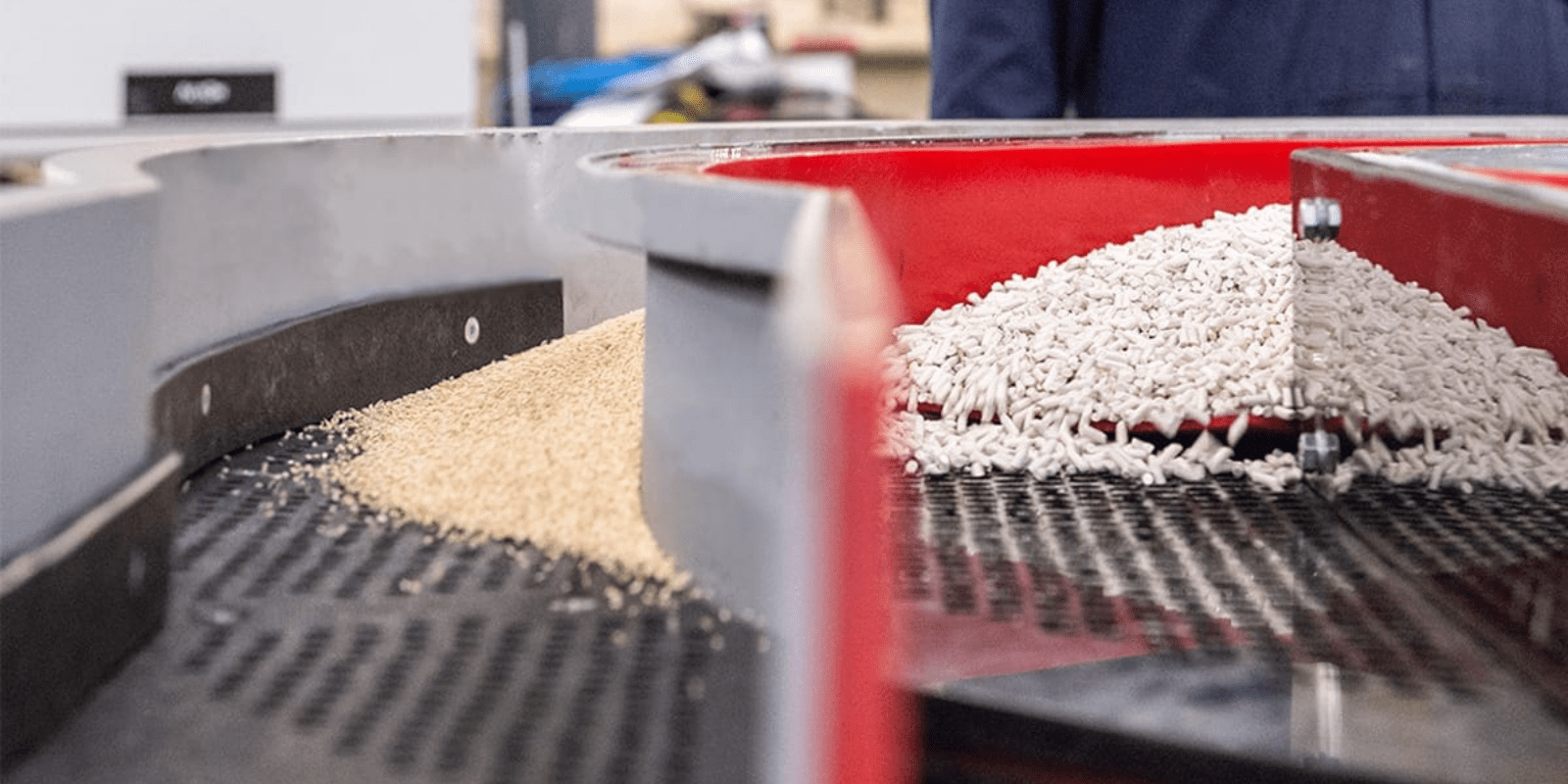

How to measure amplitude in vibratory finishing bowl
So, we know it’s an important factor, but how do you go about measuring the amplitude of your vibratory finishing machine? Where most vibratory finishing machines will run at around 4-5mm, a quick and easy way to check your machine is running at this amplitude, is to place a sticker on the outside of the machine. Once the machine starts to run, the sticker will vibrate and whichever circle overlaps perfectly is showing the correct amplitude on the machine.
Benefits of vibratory finishing
The vibratory finishing process automates the mechanical and chemical finishing of various shaped parts, and has a number of benefits, including;
- Machines can be automated – more cost and time effective
- Machines process components a lot quicker than manual finishing
- Smoother finish without excess surface wear
- Can be used as a batch and continuous process
- Can be used as a media and compound process or part-on-part process
- Can be used on a wide range of materials (from hard metals to polymers)
- It offers a quiet operation when used with an acoustic lid


Here at ActOn Finishing, we have a variety of vibratory bowls and troughs. If you’re looking to achieve great finishing results, read our brochure or get in touch with us today to learn more about the vibratory finishing process. For more information on vibratory machines, check out our other blogs on bowls vs troughs and setting parameters.
FAQs
What is a vibratory finishing machine?
As a common finishing method in the manufacturing industry, vibratory finishing is an efficient process used to optimise all types of small products and parts. Vibratory finishing machines help you clean and deburr products at a faster pace.
What is vibratory deburring?
Vibratory deburring removes the rough edges from parts and enables them to fit together more efficiently. This leads to fewer part rejections as well as improved safety. In addition, deburring is an important step in preparing parts for painting.
How does vibratory polishing work?
In this stage a combination of media, parts and compounds are placed in a vibrating machine. The vibrations cause the contents to move in a circular motion and the media to grind against the part to get the desired finish.
What is a tumbling barrel?
Barrel finishing, also known as barrel tumbling or vibratory finishing, is a surface improving operation in which a mixture of parts, media and compounds are placed in a six- or eight-sided barrel and rotated at a predetermined speed for the purpose of rounding corners, deburring, grinding, descaling, deflashing, improving surface finish and much more.
What are the different types of finishing?
There are several types of metal finishing such as metal plating, chemical finishing or coating, grinding, buffing, electroplating, and sandblasting. Each process has basic steps with all processes beginning with surface preparation. Metal finishing processes can include anything from technical processes to buffers.







